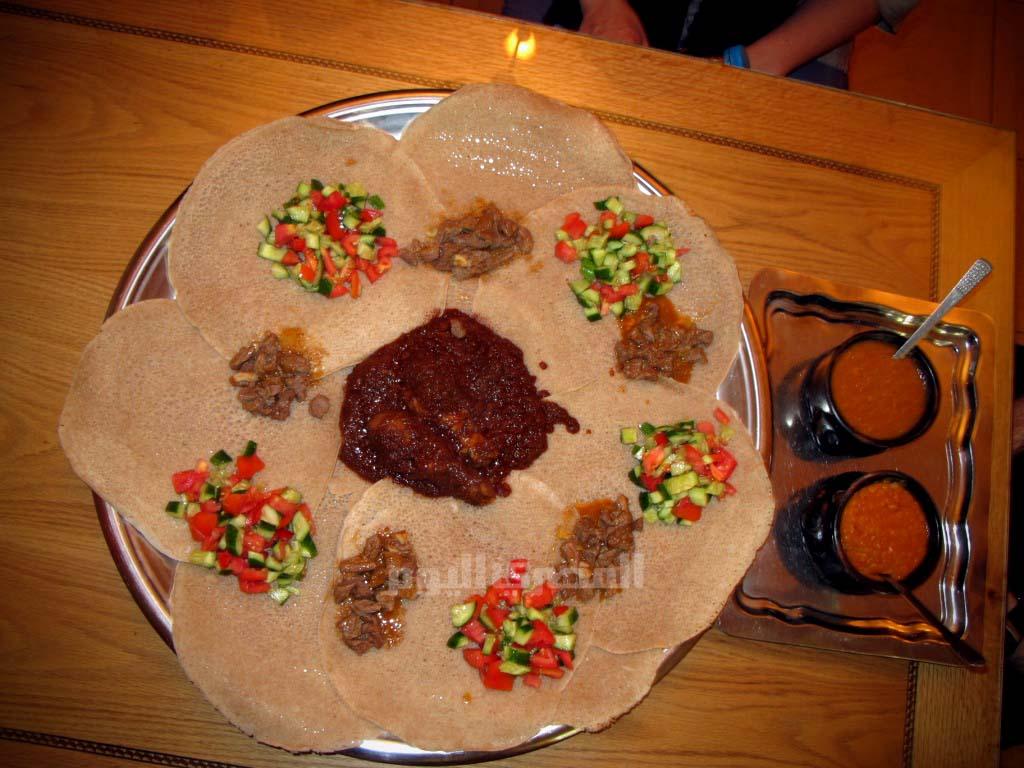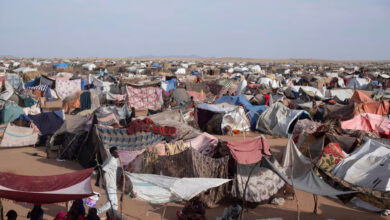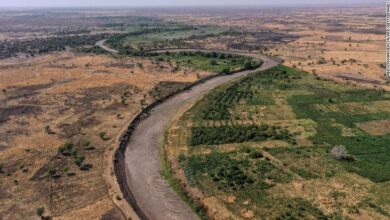
I thought my understanding of geography was perfect. My map tells me that there’s a line dividing Sudan from Ethiopia, which then splits as it nears the Red Sea to form Eritrea. On my map, the transitions are sensible, immediate, logical. Point anywhere and you’re in one country or the other. My taste buds categorize with the same sense of order: Ethiopian food is made distinctive by its willowy injara bread; Sudanese food oozes with spicy peanuts; and Eritrean food I imagine as something like Ethiopian with a bit more taste of the sea.
But of course culture ― and by extension food ― doesn’t concern itself with these map lines. In practice, culture seeps, flows, mixes and blends, irrespective of the ordered universe of cartographers. There’s a place, not far from where the Nile thunders out of the Ethiopian highlands, where these three countries all come together. Assuming you could navigate past the various border police, you could stand at one moment with the sole of your shoe pivoting on all three. And the inhabitants of this border region, while carrying any one of three different passports, are more similar than they are different. Their cuisine is also hybrid, with three distinct traditions blended at this point of porous cultural intermingling.
I am confident I will never set foot on the rock ― or square of sand or waterway; my map refuses to divulge the secrets of the place ― that unites all three countries. However, without ever leaving the comfort of Cairo, I am able to sample the deliciously intermingled food of the region, because tucked away on Husseini Strett in Dokki is the magnificent Samar al-Nil restaurant.
The décor cannot be described as magnificent. The tacky wallpaper was last fixed up decades ago. Vast holes linger in the painted walls; so long neglected, the regular clients are now oblivious to their existence. Nor would magnificent describe the ambience, where loud Ethiopo-pop pounds through weary, tinny speakers, getting louder as the night goes on.
The food, though, is nothing short of magnificent. English and Arabic are rarities here. The menu only comes in Tigrinian, a Semitic language whose ancient roots today find modern use in the hills along the Eritrea-Ethiopia border. When you walk in, a helpful woman asks whether you’re there to eat Sudanese or Ethiopian. Either is available. When you respond Ethiopian, you get something more like Eritrean.
The quality of the place is clearly established by the first taste to hit the table, one we hadn’t even ordered: two bowls of nearly identical looking lentils separated by a chasm of taste, one spicy, the other mild. Food is eaten communally, brought out on a massive platter, with diverse tastes arrayed on top of a spread of delicious injara bread. It’s this base of injara that provides one of the best aspects of the meal; as the tastes spread and blend, the bread soaks up the spices and other tastes lying on top. It’s like feasting on delicious Indian food, then scooping up your plate and eating that too.
Most of what we ate came covered in berbere sauce, the fiery red chili and ginger-inflected sauce of the Ethiopian highlands. Berbere makes everything memorable. We ate it on chicken, beef, even eggs and salad, and mixed in with some spicy lentils for good measure. After dinner, thimble-size servings of Eritrean coffee appeared, layered with a smoky incense of ginger and cardamom.
As we left, having heard not a word of English or Arabic all night, we passed a table whose patrons were eating many of the same ingredients we had, but prepared in a completely different fashion. That table had asked for Sudanese, not Ethiopian. The tiny kitchen in the back of the long, narrow dining room may not look fancy, but it still manages to turn out varied, dynamic tastes. Those of you who profess to tire of dining options in Cairo be warned ― your voice shall not be heard until you have strayed from the the city’s mainstream establishments and dined in places like Samal al-Nil, deep in the heartlands of Dokki.
Details: 16 Husseini Street, Dokki, off of Abdel Aziz Gawesh Street. The restaurant is not far from Lubnan Square. The exact street address and phone number are unverifiable. You’ll just have to explore. Open from noon to midnight daily.




